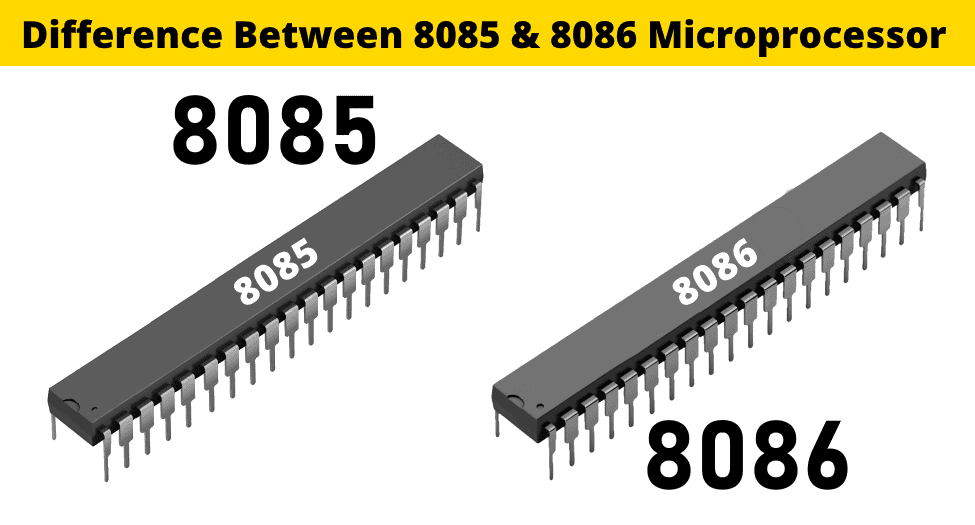
What is the Difference Between 8085 and 8086 Microprocessor?
May 30 2025 
Inquiry
Global electronic component supplier AMPHEO PTY LTD: Rich inventory for one-stop shopping. Inquire easily, and receive fast, customized solutions and quotes.
QUICK RFQ
ADD TO RFQ LIST
The 8085 and 8086 microprocessors, both developed by Intel, differ significantly in terms of architecture, capabilities, and performance.
The 8085 and 8086 microprocessors, both developed by Intel, differ significantly in terms of architecture, capabilities, and performance. Here’s a comparison highlighting the key differences:

Basic Differences
| Feature | 8085 Microprocessor | 8086 Microprocessor |
|---|---|---|
| Release Year | 1976 | 1978 |
| Data Bus Width | 8-bit | 16-bit |
| Address Bus Width | 16-bit (64 KB memory addressing) | 20-bit (1 MB memory addressing) |
| Instruction Set | Less powerful | More powerful and complex |
| Clock Speed | Typically up to 3 MHz | Typically 5 MHz to 10 MHz |
| Processor Type | 8-bit Microprocessor | 16-bit Microprocessor |
| Registers | 8-bit general-purpose registers | 16-bit general-purpose registers |
Architecture
| Feature | 8085 | 8086 |
|---|---|---|
| Architecture Type | Accumulator-based | General purpose (register-to-register) |
| Number of Registers | Fewer (A, B, C, D, E, H, L) | More and larger (AX, BX, CX, DX, etc.) |
| Segmented Memory | No | Yes (CS, DS, SS, ES) |
| Pipelining | No | Yes (fetch-decode-execute pipeline) |
| ALU Size | 8-bit | 16-bit |
Hardware and System
| Feature | 8085 | 8086 |
|---|---|---|
| Interrupts | 5 (Vectored) | 5 (Hardware), 256 (Software) |
| Co-processor Support | No | Yes (e.g., 8087 math co-processor) |
| Multiprocessor Support | No | Yes (via Minimum and Maximum modes) |
| Pin Count | 40 | 40 |
Programming & Performance
| Feature | 8085 | 8086 |
|---|---|---|
| Programming Model | Simple | More complex but powerful |
| Execution Speed | Slower | Faster due to pipelining and 16-bit operations |
| Assembly Language | Basic | Richer with more instructions and addressing modes |
Summary
-
8085 is a simpler, 8-bit microprocessor suited for small-scale embedded applications and teaching.
-
8086 is a more powerful, 16-bit processor and a precursor to modern x86 architecture used in PCs.
Populer Posts
